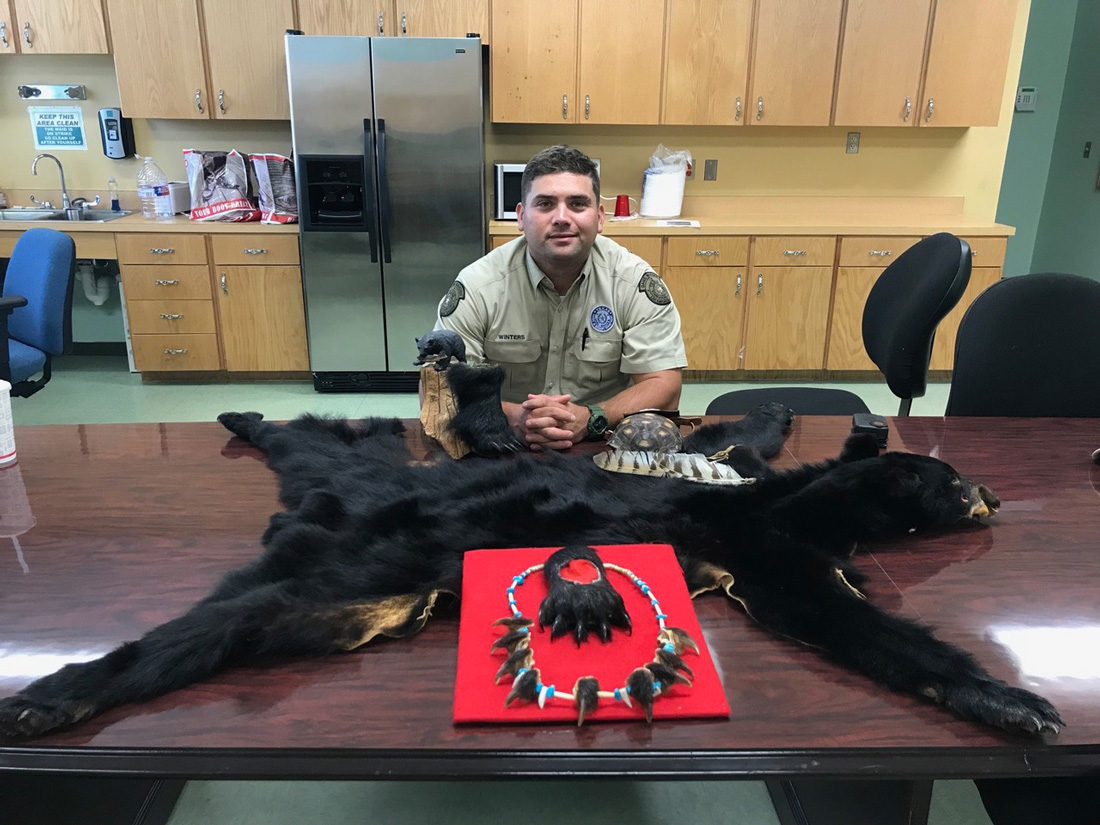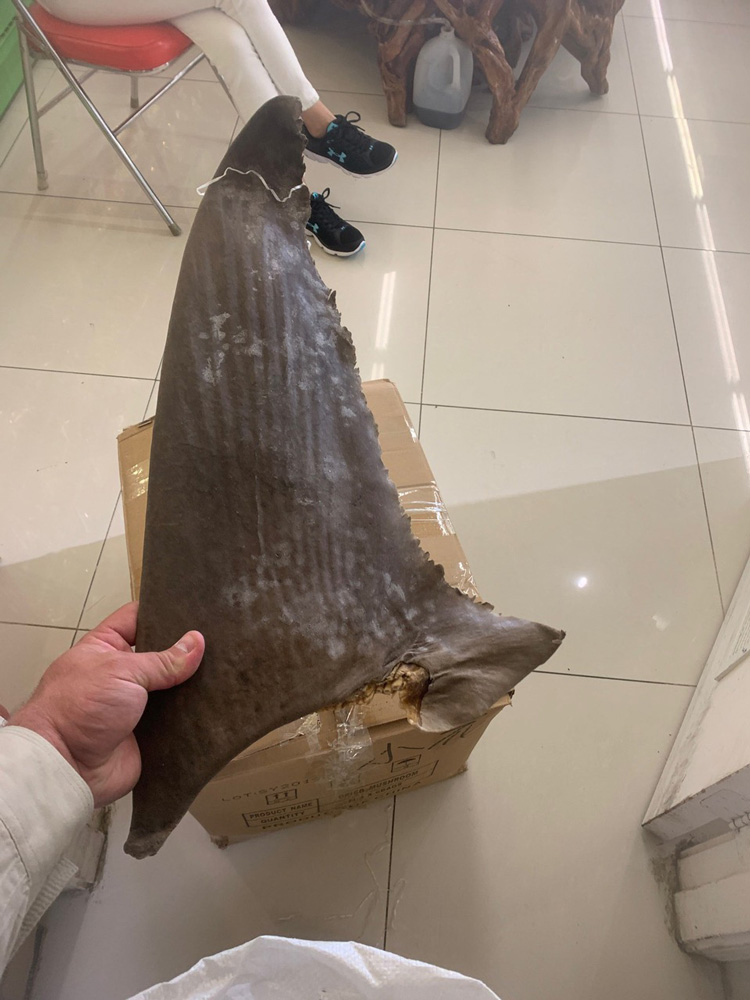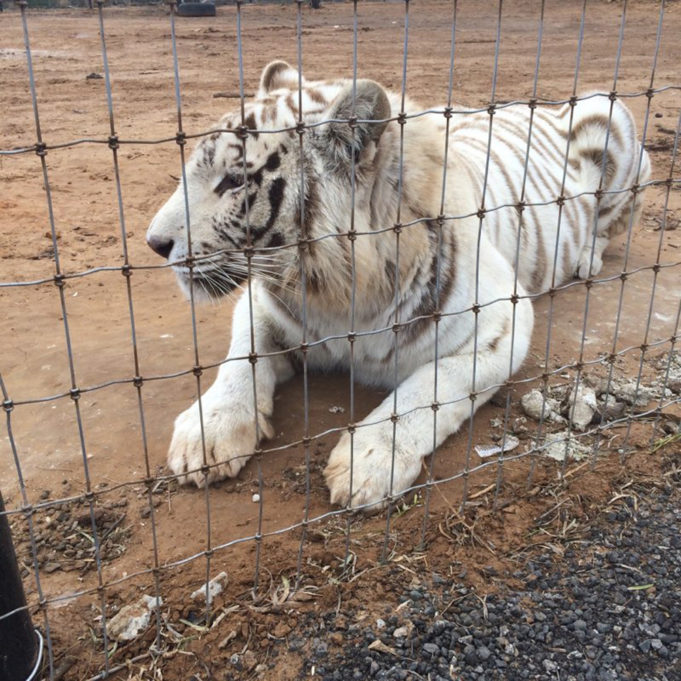“The greatness of a nation and its moral progress can be judged by the way its animals are treated.” – Mahatma Gandhi
A sleek and powerful tiger prowled through a suburban Houston neighborhood, shocking and terrifying residents. The tiger’s rich, rust-colored fur marked with jet-black stripes provided a wild contrast to the lovely lawns and orderly rows of beautiful homes which reflect a lifestyle of comfort and stability.
In a viral video, the majestic beast strides down a street with an air of both uncertainty and the boldness of a fierce predator.
The big cat evaded capture for several days before he finally met an armed off-duty sheriff’s deputy from the neighborhood. With his gun drawn, the cop found himself staring straight into the tiger’s piercing amber eyes. The tiger and deputy were separated by just the width of the back of a pickup truck.
Fortunately, the tiger’s owner was able to bring the big cat back inside, and no one, including the tiger, was injured.
The tiger, India, was later confiscated and whisked away to the Cleveland Amory Black Beauty Ranch, a sanctuary in Murchison, Texas. India’s new home allows him to spend his days clawing trees, splashing in a pool of water, and romping through tall grass.
The Humane Society of the United States and other advocacy groups have pointed to a national “tiger problem” driven by people who want to turn the beautiful yet dangerous big cats into celebrity performers or household pets.
Although the exact number of big cats in Texas is unknown, the Humane Society estimates that figure to be at least several thousand.
Keeping big cats can endanger both the animals and the people, advocates warn.
That is one reason the Big Cat Public Safety Act was passed in December 2022. The federal law is designed in part to deter people from keeping big cats as pets. It also bars exhibitors from allowing the public to touch or interact with big cats like tigers, including cubs.
Tigers are part of a much broader problem that impacts many different species: illegal wildlife trafficking. Through this illicit trade, some of the world’s most iconic animals — rhinos, elephants, and sharks — are being driven to the brink of extinction.
Poachers kill tens of thousands of elephants every year and use the tusks for ivory products, says the World Wildlife Fund (WWF). Every day, the WWF adds, poachers kill at least two rhinos due to false beliefs that their horns can cure diseases like cancer, blood disorders, and even hangovers. And Tigers are trafficked as live cubs for pets, and their fur, claws, teeth, and bones are used in traditional medicines or as amulets.
In Texas, wildlife trafficking extends far beyond tigers. According to several wildlife enforcement agents I spoke with, a wide range of species are exploited. Among them are sharks, hummingbirds, songbirds, some of the most venomous snakes in the world, spider monkeys, turtles, and black bears, to name a few.

Photo by Kevin Winters
North Texas also plays a role in illegal, international wildlife trafficking.
A January 2022 report in Conservation Science and Research names Dallas, Atlanta, and San Francisco as “entry hotspots” for illegal tiger imports that enter the United States. The shipments come primarily from China and Vietnam.
In Texas and worldwide, illegal wildlife trafficking is fueled by a demand for exotic pets as well as items often made from endangered species. Various parts of the animals are fashioned into things like jewelry, trinkets, chess sets, trophies, and furs used for display or coats. Traffickers also capitalize on cultural traditions and beliefs that some animals or their body parts carry medicinal value or mystical power, government agents and experts said.
Mystic practitioners can face federal charges when their rituals or beliefs involve endangered species.
Hector Reyes of Rio Grande City pleaded not guilty in June to charges related to drug smuggling and the federal Endangered Species Act. Reyes allegedly performed rituals that he believed would conceal illegal drug shipments from law enforcement. An indictment by the U.S. District Court in McAllen says that Reyes intended to sacrifice a 5-week-old female jaguar. Authorities confiscated the feline and sent her to the Gladys Porter Zoo.
Another ritualistic practice in Texas with a protected species involves hummingbird “charms” known as chuparosas. The hummingbirds, which are believed to have magical powers in some Latin America cultures, are dried and packaged with a prayer card. The charms are intended to help someone find love, the Audubon Society says.
In one case, Cynthia Macias-Martinez, the owner of a Dallas mystic store, pleaded guilty in 2020 to federal charges relating to selling the hummingbirds without a valid permit or authorization, according to the U.S. Attorney’s Office in the Northern District of Texas.
Jim Stinebaugh, assistant special agent in charge for the southwest region of the U.S. Fish and Wildlife Service, said that agents from his office have investigated the sale of chuparosas. Typically, the birds are sold “behind the counter” of botanical stores, and a buyer must know the right way to ask for them to obtain one, Stinebaugh said.
Other trafficked items in Texas are also used for status, display purposes, or food.
Kevin Winters, a game warden with the Texas Parks and Wildlife Department, has worked cases involving items made from a black bear (an endangered species) that were sold in a Laredo flea market several years ago, he said.
Other cases along the Mexico border include a white tiger that was confiscated. A photo provided by Winters shows the animal sitting behind a flimsy wire fence. Another photo reveals a brown bear and a black bear behind thin wire fencing. One of them is standing nose-to-nose with a dog on the other side.
In 2022, several hundred shark fins were confiscated from a San Antonio seafood restaurant. Shark fins are often made into soup, a dish that is illegal in the United States. The fins are collected by capturing a shark, dragging it onto a boat, and then chopping off the fin before throwing the shark back into the water. Unable to swim, the sharks will bleed to death or drown.

Photo by Kevin Winters
The arrival of shark fins or other wildlife parts in the United States is often connected to well-organized international networks.
Organized crime rings are behind the destruction of creatures of the forests, rivers, seas, and skies as traffickers exploit an international demand for exotic pets, their body parts, or products made from the animals.
Wildlife trafficking is a significant problem because it impacts animals and ecosystems, which in turn can set the planet out of balance.
“There’s an overall loss of nature and biodiversity, and ecosystems are crumbling,” said Crawford Allan, an international wildlife trafficking expert and senior director of wildlife crime with WWF. “Forests and rivers are being emptied of wildlife for this demand.”
Wildlife trafficking is the fourth largest source of finance for transnational criminal organizations, generating as much as $23 billion per year, according to U.S. Immigration and Customs Enforcement (ICE).
To tap into the insidious but lucrative field, traffickers added wildlife to existing crime rings of guns and drugs, experts and wildlife enforcement agents told me.
“There’s a very low risk in them trading this wildlife, and prices have gone through the roof,” Allan said. “The availability has become very prevalent, and in some cases, it is driving some species to near extinction.”
The totoaba fish is one of them.
In June, officers with U.S. Customs and Border Protection in Arizona seized about $2.7 million worth of the fish’s swim bladders that sell for astronomical amounts on the black market.
“It’s the equivalent of cocaine in terms of value, and it’s smuggled by the same people who smuggle cocaine,” Allan said.
The operation can involve moving the fish bladders through underground tunnels to bring the items out of Mexico and into the states and then into markets in China, Allan said.
In addition to using the swim bladders in a soup, some Asian cultures believe the bladders have magical powers to boost fertility.
But why are so many people seeking these products?
Aside from personal beliefs, social media is used to manipulate the public into thinking these are items they must have, Allan said.
“It’s marketing,” he continued. “It’s clever marketing. Through social media especially, the items are hyped to the point where people think that they’ve got to have it.”
People, he said, are led to believe “you’re nobody unless you’ve got your big rhino-horn bangles on your wrist or you don’t have those ivory carvings in your house. It’s about status and wealth and fashion. All of it is being perpetuated by social media.”
Part of the WWF’s efforts to combat wildlife trafficking is a worldwide coalition of organizations that ensure illegal online listings for prohibited wildlife sales are taken down.
Illegally trafficked wildlife items are not necessarily being bought by the extremely wealthy. There are cheaper versions and fake versions that are also increasing in demand, Allan said. If people believe something is potentially lifesaving, they will invest a lot of their earnings into it.
“If somebody believes that medicine will cure their child of an illness, they’ll try to find the money,” Allan said.
But how are these wild animals, some of them very dangerous, being captured?
When animals are being poached, traffickers will use a lot of snares, which usually ends up killing the animal, Allan said.
“That’s when [poachers] want to trade [the animals’] bones or meat,” he said.
Traffickers employ equally ruthless methods for capturing wild baby animals for pets.
“Unfortunately, a lot of times they’ll kill the mother or the parents so they can get the young, as they do with the orangutans,” Allan told me. “Typically, with the cheetahs, they’ll find where the cubs are, and they’ll wait until the parents are away or they’ll scare the parents away and take the cubs.”
Locals who are experts in tracking and following the signs of animal activity also play a role.
“The people on the ground who are doing this are usually in the communities, and they’re doing it out of desperation to make money or eke out a living,” Allan said.
In South Africa, for example, dogs hunt pangolins by going into the boroughs to flush them out. As the pangolins leave through holes in the boroughs, a cage is waiting at the end to capture them.
Although wildlife trafficking is well-organized and large in scope, there are steps individuals can take to help.
First, be mindful of what materials are used to make products, Allan said. If you’re buying an exotic pet, ask yourself where it came from, whether it’s legal, and whether you can provide proper care. You can also become involved by contacting conservation groups that are local, statewide, national, or international.
“As humans, we want to put a value on everything, but there’s also a spiritual value,” Stinebaugh said. “For someone like me, who really loves and appreciates wildlife, I like knowing that they exist, that they are where they belong, and that we’ve done our part to help ensure their continued existence.”
What animal-centric happenings are on the calendar during the Dog Days of Summer? Find out in the Night & Day column in Creature Comforts 2023.












